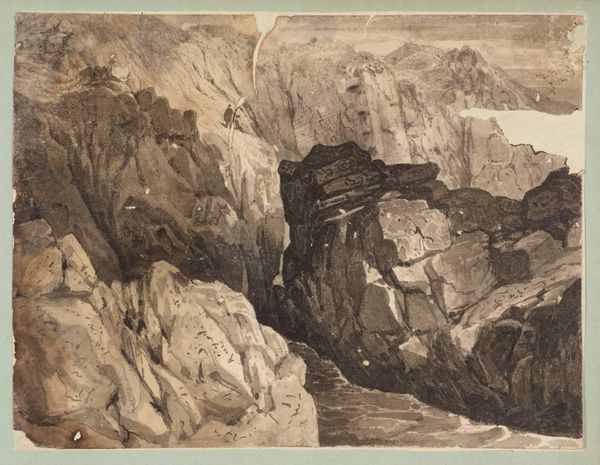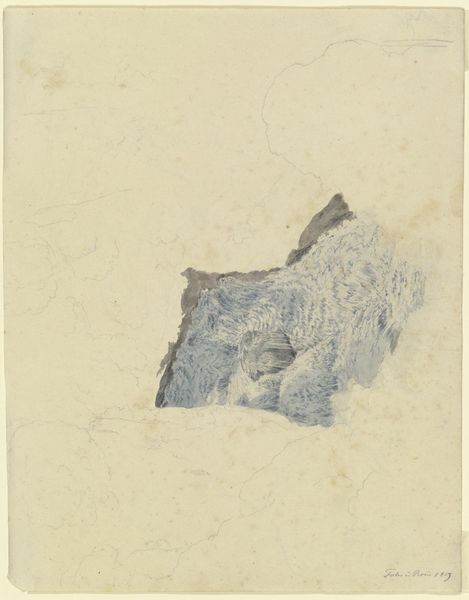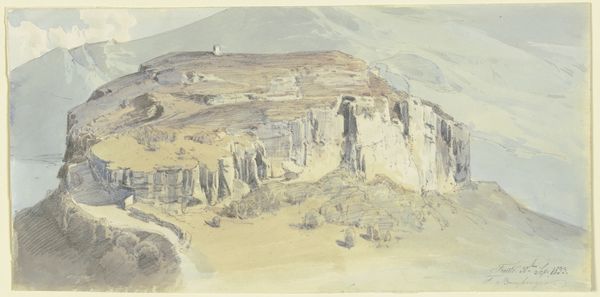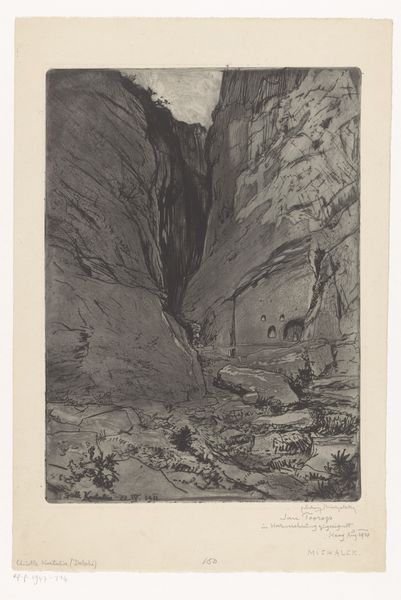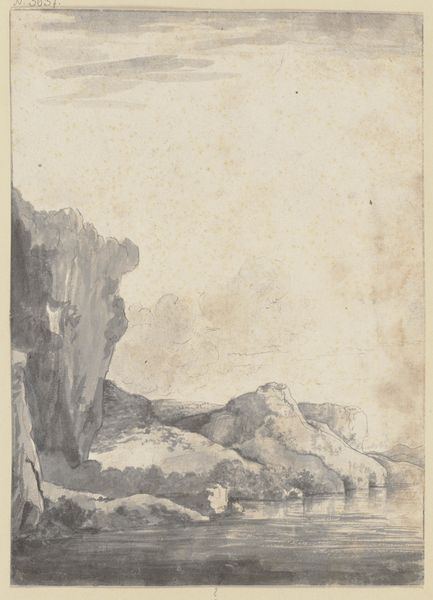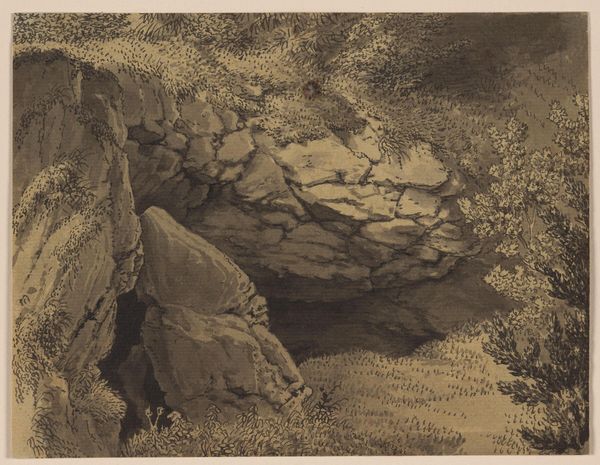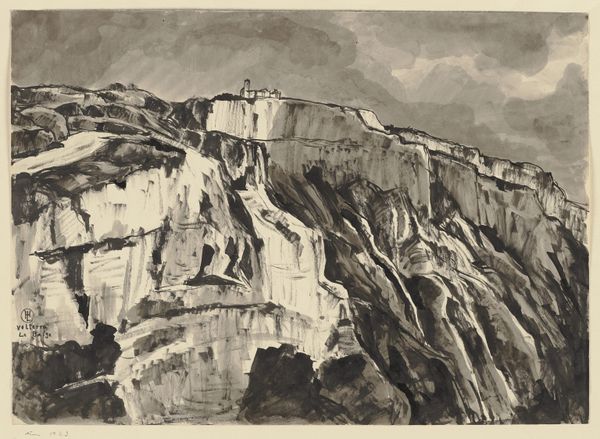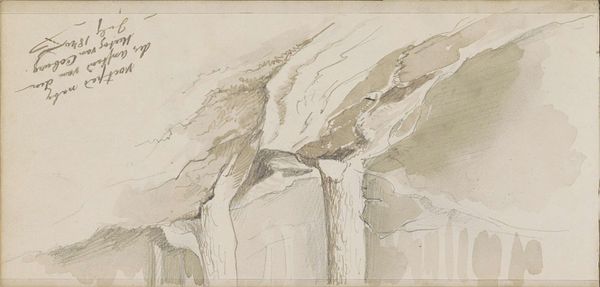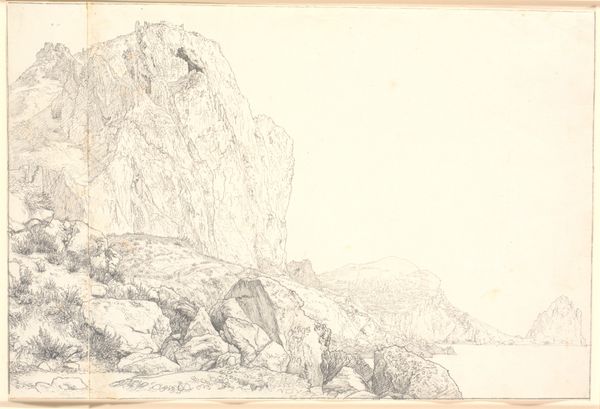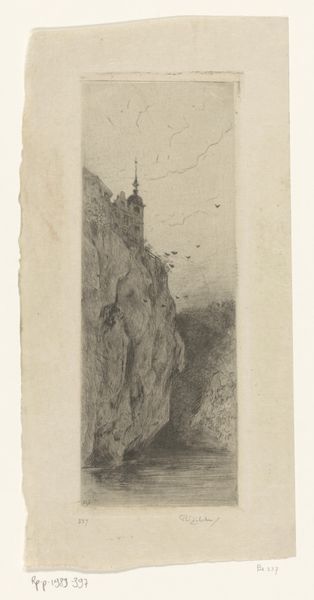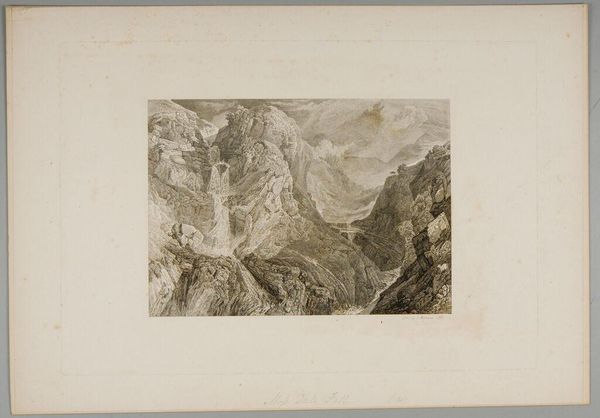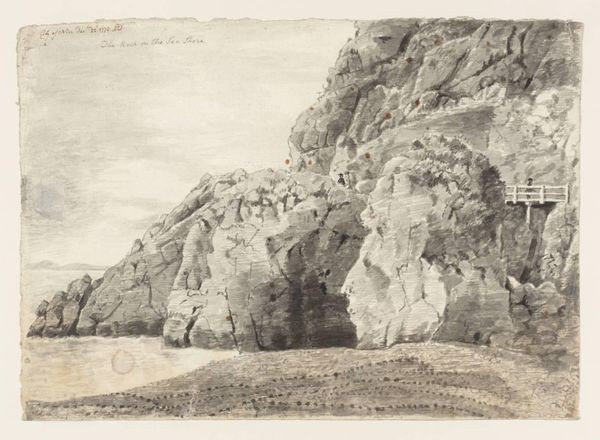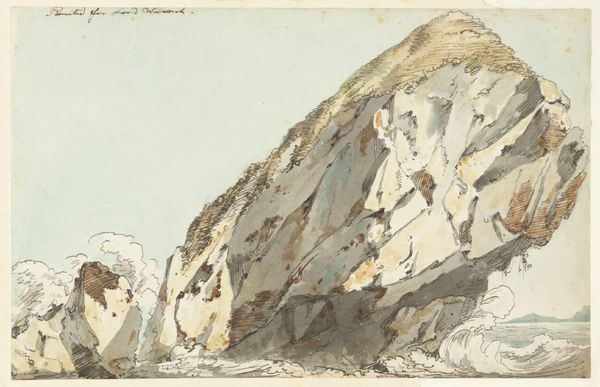
watercolor
#
landscape
#
watercolor
#
romanticism
#
line
#
realism
Dimensions: height 242 mm, width 357 mm
Copyright: Rijks Museum: Open Domain
Editor: So this watercolor, titled "Steengroeve," created between 1810 and 1857 by Abraham Teerlink, is quite striking! There's this massive quarry face dominating the scene, and it feels… well, almost unsettling in its scale. How might its size and composition speak to viewers of that time? Curator: Good observation! Size and composition absolutely mattered. Consider the context: the early to mid-19th century was a period of immense industrial expansion. Quarrying stone for construction – buildings, roads, railways – reshaped the very landscape. Editor: So the quarry isn’t just a scenic backdrop; it's evidence of societal changes. Curator: Exactly! Teerlink's rendering isn’t just about portraying a landscape. The details of human figures dwarfed by the stone face and the infrastructure – like the crude structure on the right side -- reveal how human labor was beginning to alter and depend upon the earth’s raw materials. Note that Romanticism, a very emotional artistic movement that included deep dives into landscape painting, coincides with the onset of Realism, and how painters depict reality -- in ways previously avoided -- because society can no longer afford to do so! What are your thoughts about that? Editor: It's kind of sobering! Were viewers celebrating progress or critiquing the costs? Curator: That’s the interesting tension. There's likely some pride in engineering, a sense of taming nature, perhaps. Yet, even with the aesthetic beauty of the watercolour and the appeal of seeing layers of stone and sediment exposed by mining operations, I can sense a certain anxiety regarding nature’s subjugation in an era undergoing rapid industrial and social changes. Editor: I'm seeing the painting so differently now, less about pure scenery and more about this complex relationship between humanity and its environment. Curator: And that's precisely how understanding history helps us unpack a painting's layered meanings! The historical circumstances shaped the artist's viewpoint.
Comments
No comments
Be the first to comment and join the conversation on the ultimate creative platform.
